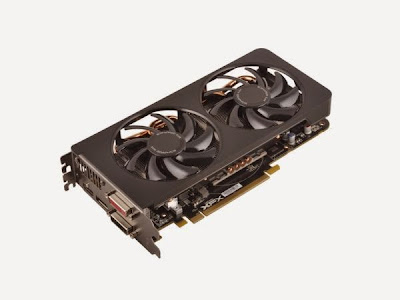
The Radeon R9 285, has emerged months after the rest of the firm’s current range debuted, but there’s a good reason for that – it uses a brand-new core, dubbed Tonga, The R9 285 is designed to replace the R9 280 as well as bring the fight to Nvidia’s GeForce GTX 760, and it should play every game at 1080p and 1440p – although 4K will likely be beyond its abilities. Price-wise, the various models of the R9 285 cost between £170 and £190 – the same sort of cash you’ll pay for the GTX 760, The R9 285 is the only card to currently use the Tonga core. It’s a mid-range core, but it shares a crucial part of its architecture with AMD’s high-end 290-series parts, with the 1,792 stream processors split into a quartet of shader engines.
That means the R9 285 has double the engines of the 280 it replaces – a move that should improve performance in a host of areas, from geometric and tessellation performance to general compute tasks. Tonga’s high-end DNA bodes well for gaming performance, and that’s not the only impressive statistic inside this GPU. AMD says there are 5 billion transistors inside, which is more than the 4.3 billion inside the R9 280 – and almost 1.5 billion more than Nvidia’s GTX 760 offers. Elsewhere, the 285’s mid-range intentions are made obvious. The 918MHz core clock is the lowest of any mid-range or top-end AMD card, and it’s also behind the 980MHz core of the GTX 760. The memory’s 1,375MHz clock bests the 1,250MHz of the R9 280, but the new 285 has 2GB of GDDR5 memory with a 256-bit bus – a poorer offering than the 3GB, 384-bit R9 280. That means a top memory bandwidth of 176GB/s, which can’t compete with the 240GB/s of the older GPU.
That means the R9 285 has double the engines of the 280 it replaces – a move that should improve performance in a host of areas, from geometric and tessellation performance to general compute tasks. Tonga’s high-end DNA bodes well for gaming performance, and that’s not the only impressive statistic inside this GPU. AMD says there are 5 billion transistors inside, which is more than the 4.3 billion inside the R9 280 – and almost 1.5 billion more than Nvidia’s GTX 760 offers. Elsewhere, the 285’s mid-range intentions are made obvious. The 918MHz core clock is the lowest of any mid-range or top-end AMD card, and it’s also behind the 980MHz core of the GTX 760. The memory’s 1,375MHz clock bests the 1,250MHz of the R9 280, but the new 285 has 2GB of GDDR5 memory with a 256-bit bus – a poorer offering than the 3GB, 384-bit R9 280. That means a top memory bandwidth of 176GB/s, which can’t compete with the 240GB/s of the older GPU.
The R9 285 is still built on the familiar Graphics Core Next architecture, but this third iteration has been improved across the board. There’s better support for 4K H.264 video playback, transcoding is more efficient, and AMD says that lossless compression makes for more efficient memory handling. This card also has the latest CrossFire controller, so multi-GPU setups don’t require bridge connectors – everything goes through the PCI-Express slot. The Mantle API and TrueAudio are both supported, although their advantages will only be obvious when more developers are on-board with both programmes. On the outside the R9 285 doesn’t throw up any surprises. Card length varies depending on which board partner you use, but the R9 285 is a similar length to the R9 280 and GTX 760 – so you’re looking at a 270mm-300mm PCB. The R9 285 requires two six-pin power connectors.
How We Tested.
We’ve locked and loaded five games for this GPU test. Battlefield 4, Bioshock Infinite and Crysis 3 all return from our previous reviews, and we’ve added Metro: Last Light and Batman: Arkham Origins to the mix. We’ve tested at 1,920 x 1,080, 2,560 x 1,440 and even 3,840 x 2,160 to see which card is best across single-screens – and to check if any of them can handle 4K. We’ve used 3D Mark’s Fire Strike test and four Unigine Heaven benchmarks to test theoretical performance, and we’ve taken idle and load temperatures and power requirements to see which card is the coolest and most frugal, Our test rig consists of an Asus X79-Deluxe motherboard, Intel Core i7-4960X processor, 16GB of RAM and a 1TB hard disk. To get prices for each card we visited www.scan.co.uk and noted down the cheapest stock-speed card we could find, although we will be referring to the various overclocked and tweaked models available for each GPU, which will be more expensive, later on in the review.
 Wlaptops
Wlaptops